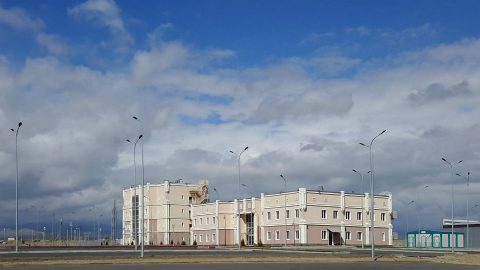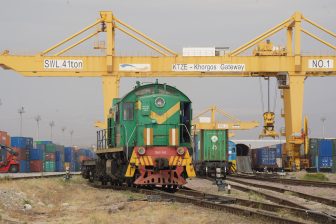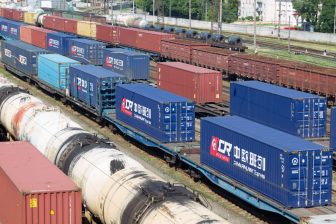
Freight handling at Chinese-Kazakh border now 30 times faster
The handling of freight trains at the Chinese-Kazakh border crossing of Khorgos-Altynkol has been reduced in time due to a technical advancement. The processing of documents can now be done thirty times faster, said Kazakh railway company Kazakhstan Temir Zholy (KTZ).
The replacement of copper by fiber optic cable between Altynkol and Khorgos ensured a significant acceleration of the process of obtaining information and issuing shipping documents at the border. “If earlier information about the cargo arrived on Altynkol from Khorgos in thirty to forty seconds, now it is literally a second, reducing the processing of documents by thirty times,” said the head of Altynkol station, Zhandos Untakbayev.
Custom procedures
Untakbayev explained that the exchange of information between Altynkol and Khorgos is ongoing 24 hours a day. “While the container train is still in China, the accompanying documents are already processed at the Altynkol station in electronic form. In general, the processing time of one container train is three hours and 55 minutes”, he said, adding that the border station could now handle twenty trains per day.
The border crossing is currently developed to increase capacity and is expected to handle up to fifteen million tonnes of freight a year once fully complete. A 293-kilometre railway was completed from the Khorgos border crossing to Kazakhstan’s Zhetygen terminal end 2011, and the tracks from the Chinese and Kazakh sides of the border were connected one year later. The passage is supposed to form an alternative to the commonly used Alas Hankou-Dostyk border crossing further north. This border crossing is facing congestion.
Volumes
Since the beginning of 2018, traffic through Khorgos-Altynkol in the direction of Europe has amounted to 64 container trains or 3,730 TEUs. This included twelve trains to Germany (654 TEUs) and 32 to Poland (1,996 TEUs). Trains also headed for Finland, Slovakia, Austria and Hungary. About 250 trains proceeded in the direction of Central Asian countries, while five trains travelled along a new route to the Persian Gulf. In total, the border crossing handled 316 trains or 25,582 TEUs this year, compared to 421 trains or 39,604 TEUs in the entire year of 2017, said KTZ.





